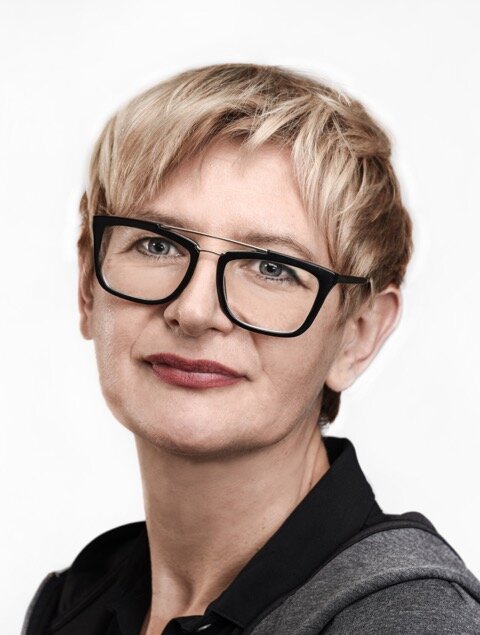
Presenter - Agata Kwiatkowska-Lubańska

Agata Kwiatkowska-Lubańska, Color Designer and Educator
Afternoon Breakout Session
Subtractive color mixing as a support for color memory
It is hard if not impossible, to remember distinct colors. This underscores the important fact that the visual memory is very poor in comparison with our auditory memory. Often the latter is able to repeat a melody heard only once or twice.’ (Josef Albers „Interaction of color” p. 3) The transfer of color impressions from short-term memory to long-term memory is a process that is subject to a risk of error. Many studies have sought regularities about the nature of these changes. It has also been argued that color memory can be developed and educated. In my paper I will try to pass on the results of experiments performed with the participation of design students, as part of the color fundamentals course. They were carried out in the years 2018-2020. The aim of the experiments was both to analyze the differences between nominal and memory colors and to develop the color sensitivity of future designers. I used both color samples from the Munsell Book of Color as well as samples recorded in the Natural Color System standard. In subsequent experiments, successive color matching of one to four color samples was tested. Colors of different hue, brightness and saturation were used. The experiment carried out in the academic year 2019/2020 involved 30 students of the Faculty of Design at the Academy of Fine Arts in Krakow and the State Higher Vocational School in Tarnow. Previous attempts have shown that the use of painting technique allows to better understand and analyze the remembered color. This time the color swatches were prepared with the same acrylic paint used by the students, so that precise reproduction of each color was technically possible. The experiment consisted of two parts: in the first part, the students received 9 color swatches, which they had to mix as precisely as possible during the classes (3 hours). The aim of this task was to check if the group knew the rules of acrylic paint mixing . During the subsequent classes, each student's task was to remember and mix the 9 colors, which were presented in turn, 3 colors in each set. The results were analysed on the basis of the NCS system for features such as hue, whiteness, blackness and chromaticness. At the same time, the experiment was discussed with students who expressed interest and willingness to develop their skills in remembering and mixing colors. The results obtained were compared with previous studies, in which color atlases were used. A number of conclusions have emerged, however, they require further investigation.
Bio
Dr. Agata Kwiatkowska-Lubańska is a colour designer and associate professor at the Jan Matejko Academy of Fine Arts in Kraków. Head of a Colour Design Studio at the Faculty of Industrial Design. She is the co-founder of the Polish Colour Association and a promotor of many international and local events devoted to colour theory and design. She is involved in colour trends forecasting in Poland and has collaborated widely with a range of industry partners, designing colours for different products and interior architecture. Engaged design educator with executive board positions in organizations and educational institutions. Passionate about colour as a powerful tool for the human environment improvement.